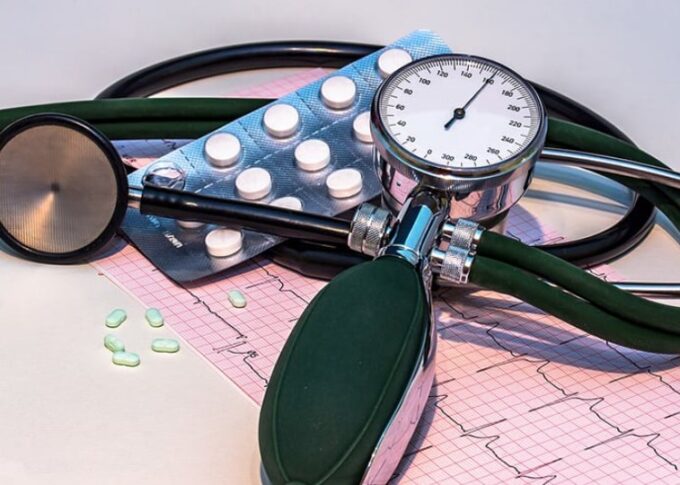For many of us, health care items begin and end with the doctor’s office. If we don’t have health problems or long-term conditions to manage, we may not think twice about the equipment and paraphernalia we find in a hospital.
However, a person with poor health may need to think harder about certain home health care items. What items might a person with a health condition or any kind of long-term illness need to keep in their home? How much will they cost? More importantly, where can they buy these items – on a budget?
Let’s find out.
Who Needs Home Health Care Items?

Anyone with long-term health conditions, serious illnesses, or disabilities should consider investing in home health care items. Seniors may also want to consider some medical items, like mobility devices.
This is simply because persons with health conditions are going to need additional care at home. The kind of equipment they will need will depend on their condition.
For example, a person with mobility issues may only need items like crutches, frames, or wheelchairs. However, someone with more serious medical conditions will need more equipment and more complicated items.
If you intend to receive medical treatment at home or care for someone with a serious illness, it’s good to consult with a doctor about what kind of equipment you’ll need, and how to use it.
Mobility Products
For mobility products, you’ll need to consider walking frames or rollators, if the patient is able to move around their home a little. Wheelchairs are usually simple – so long as the patient is comfortable, that’s often all that matters. Walking frames and rollators are a little more complicated.
A poorly adjusted frame can lead to a patient developing back problems, from reaching down or up to use their frame. You can choose between four or three-wheeled rollators, from a variety of styles and designs.
Rollators are good for moving around one’s home, but they can also help preserve a person’s mobility outside the home. When choosing a rollator, you’ll need to make sure it’s properly sized for the patient.
If the frame is too low, the patient will lean forward, and this will cause posture and back problems. Frames that are too high will make it difficult for the user to straighten their elbows and rest their weight on the rollator.
Consult with your doctor about where to get rollators. They may be covered by your healthcare insurance, or you might be able to get access to cheap or reduced-price rollators.
Nutrition

If you or a loved one are dealing with an ongoing illness, nutrition is a very important consideration. Losing weight or getting insufficient nutrition is obviously dangerous, but gaining weight can also pose a threat since excess weight can exacerbate certain health conditions and decrease mobility.
One of the best ways to make sure that you and your loved ones are getting enough nutrients is to eat a healthy, balanced diet. However, dietary requirements or other health concerns can make that difficult.
So, you may want to invest in vitamin supplements. Supplements don’t replace “real” nutrients, but they are certainly better than missing out on key vitamins completely.
Supplements can be found in the form of teas, smoothies, gummies, pills, and even puddings. Capsules and pills are the most commonly used type of supplements and are often the cheapest. Gummies might be fun and tasty, but they tend to cost more for fewer supplements.
So, if you’re working on a budget, ask your pharmacist to recommend reliable supplements for a reasonable price. If you use food stamps, be aware that your food stamp money will not cover medicines, vitamins, or supplements.
Medical Cables and Assorted Equipment
Nutrition and mobility products are relatively straightforward. Other medical equipment, however, can get more complicated.
You should always consult a doctor to find out what kind of equipment you’ll need to administer proper medical care while at home, or what equipment any nurses and carers will need.
Here’s a brief list of the kind of cables and equipment you might need:
- Pulse oximeters
- Blood pressure cuffs
- Adapter cables
- Disposable/finger clip sensors
- Drainage bags
- Enteral feeding tubes
- Basic first aid kit
Most of this equipment is self-explanatory. However, you’ll either need extensive training to use the cables, sensors, draining bags, etc, or else have a nurse or carer visiting daily.
While products like blood pressure cuffs and a first aid kit can be bought just about anywhere, medical cables can be a little trickier. Also, cheaper isn’t always better. You need a sturdy, reliable bit of equipment, ideally which doesn’t break the bank.
For reliable equipment, check out advantage medical cables at Sensoronics.
What If You Need More Help?

Your health insurance may cover the treatment and equipment you’ll need. Full-time carers of a family member can also receive an allowance.
Budgeting during a health crisis can be tricky. Caring for a sick friend or relative, or dealing with an illness yourself is emotionally and physically draining, to say nothing of financially draining.
If you or a loved one needs at-home care, you might want to consider Medicaid. Medicaid provides assistance to eligible households and individuals, and will even offer long-term, at-home care.
For many persons suffering from long-term illness, and especially seniors, their own personal freedom and independence are crucial. Programs like Medicaid may help to walk the line between administering the care needed and allowing the individual to retain their freedom and dignity.
The Bottom Line
Medical treatment can be expensive. Dealing with a long-term health condition – or even an intense, short-term condition – is draining and tiring, for both the carers and the patients.
However, one key point not to overlook is one’s emotional and mental wellbeing, whether you’re the sick person or you’re the carer.
If you feel overwhelmed, why not speak to your doctor about at-home care from nurses and professional carers? You could also do some research to find out whether you can receive financial help for buying medical equipment and mobility aids.









